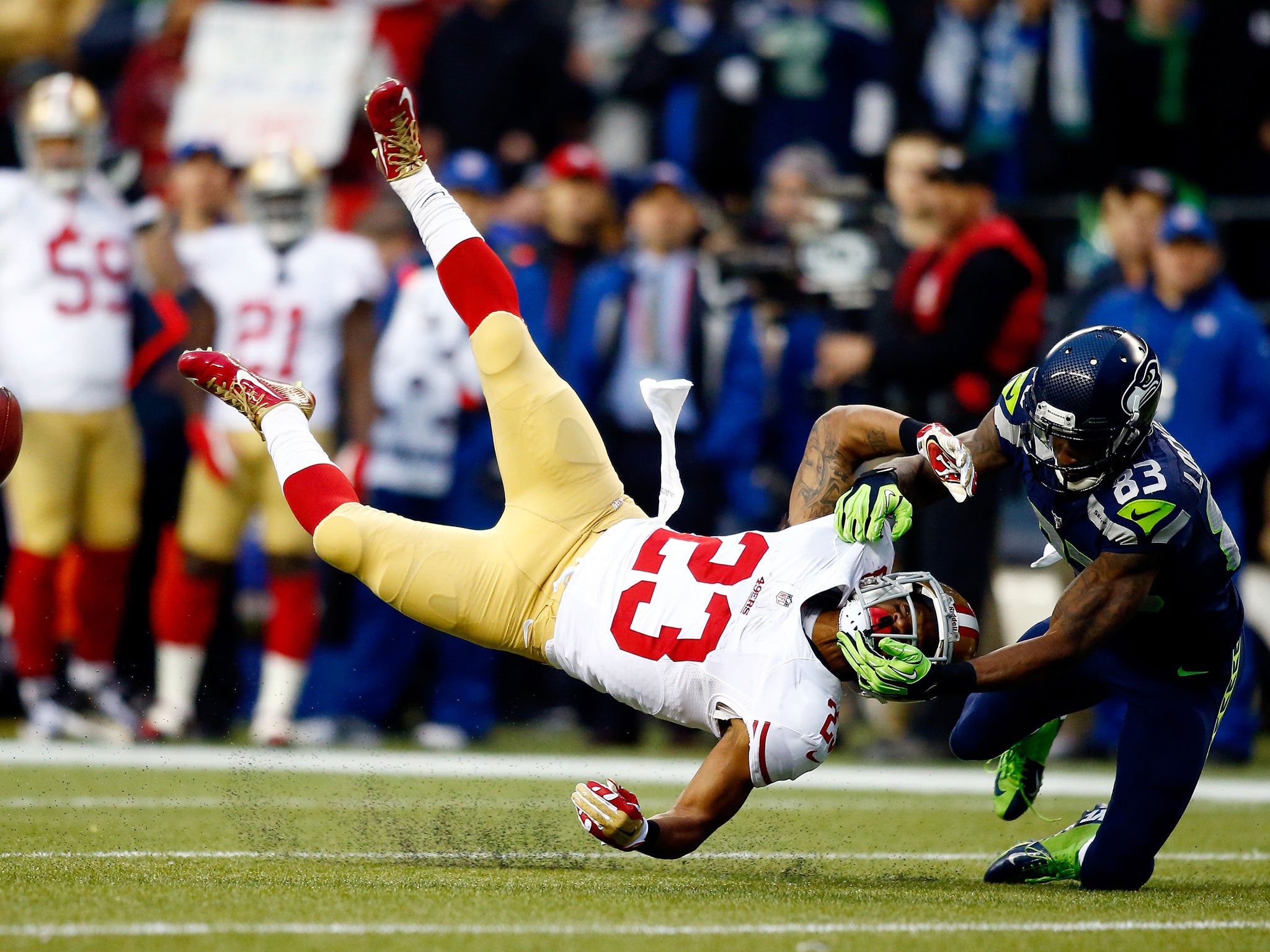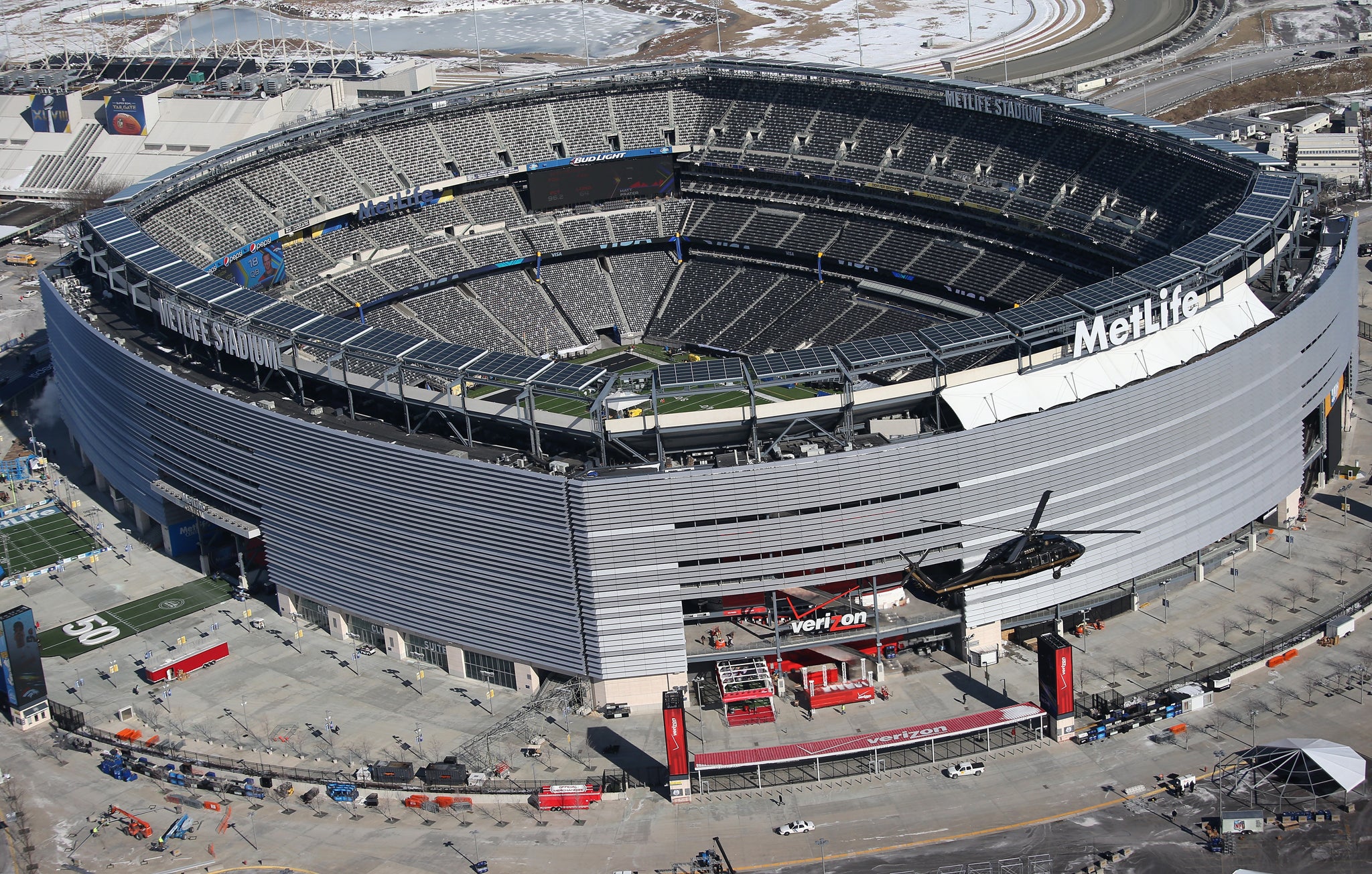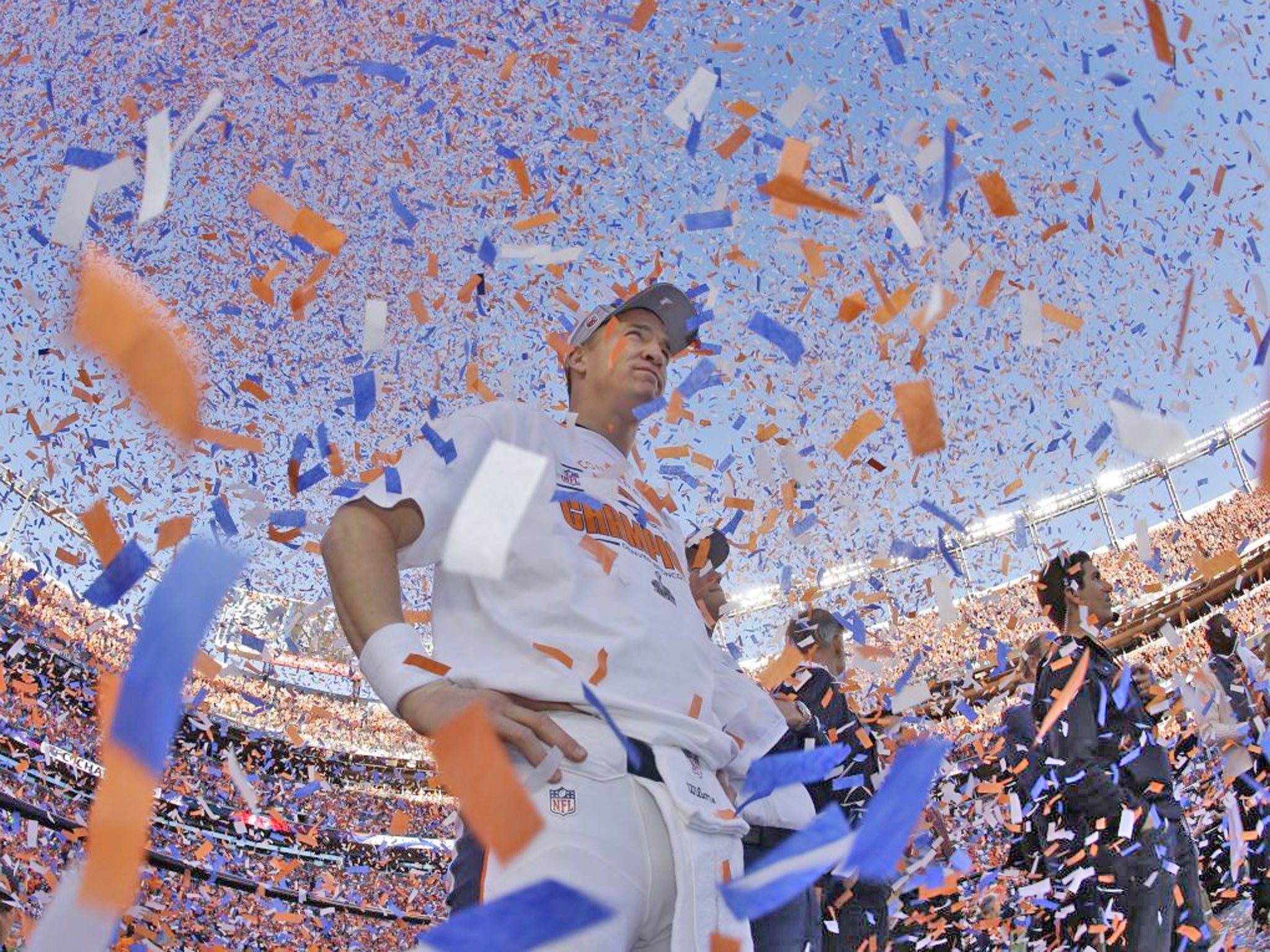Super Bowl 2014: Seattle Seahawks vs Denver Broncos - NFL match-up for the ages clouded by concussion
Sunday’s NFL showpiece is shaping up to be a classic but the season has been dogged by a controversy that threatens the very future of the sport

Your support helps us to tell the story
From reproductive rights to climate change to Big Tech, The Independent is on the ground when the story is developing. Whether it's investigating the financials of Elon Musk's pro-Trump PAC or producing our latest documentary, 'The A Word', which shines a light on the American women fighting for reproductive rights, we know how important it is to parse out the facts from the messaging.
At such a critical moment in US history, we need reporters on the ground. Your donation allows us to keep sending journalists to speak to both sides of the story.
The Independent is trusted by Americans across the entire political spectrum. And unlike many other quality news outlets, we choose not to lock Americans out of our reporting and analysis with paywalls. We believe quality journalism should be available to everyone, paid for by those who can afford it.
Your support makes all the difference.How does the National Football League always get so lucky? This has been, to put it mildly, a rather fraught year for the brashest, richest and surely most violent sports league on earth (of which much more in a moment). Instead, the eyes of America are fixated on this weekend’s Super Bowl, a match-up for the ages.
Super Bowl Sundays have long since turned into an unofficial national holiday, regardless of the sporting merits of the event per se. But the 2014 match-up shapes up as a classic. It pits the NFL’s best offense, in the person of the Denver Broncos, against its best defense, the Seattle Seahawks. It teems with storylines. Will Denver’s Peyton Manning, who returned from quadruple neck surgery to smash NFL single-season yardage and touchdown records in 2013, use the occasion to prove, once and for all, that he is the greatest quarterback of his era? Indeed, will Manning bow out at the top, making this the final game of his career? On the other hand, the Seahawks could win their first ever championship, and Russell Wilson has a chance to demonstrate that he, not the Indianapolis Colts’ Andrew Luck or the Redskins’ Robert Griffin III, is the finest of this rich new generation of quarterbacks.
In the department of words rather than deeds, the centre of attention is Richard Sherman, Seattle’s Stanford-educated and dreadlocked cornerback after his take-no-prisoners tirade to a television reporter after the Seahawks’ NFC championship win over the San Francisco 49ers now known as “the epic rant”. This Super Bowl could seal Sherman’s reputation as a sledger to outdo even the average Aussie slip fielder.
And then there’s the venue. Technically, the game is being played across from Manhattan on the soil of New Jersey, at the Met Life stadium in East Rutherford. But for practical purposes the Hudson river has been wiped from the map. Super Bowl XLVIII is New York’s Super Bowl. The most hyped event in US sport, with its gladiatorial ethos and Caesarean shtick has come to the city that invented hype. Even with the weather, the NFL looks as it if it’s getting lucky. This is the first open air Super Bowl to be held in a “cold weather city”. In this winter of polar vortexes, there had been fears the event would be frozen or snowed to death. Instead, Sunday’s game time temperature is forecast at a bearable 35 degrees Fahrenheit or 2C.

All good news – and which helps take the country’s mind off the darker side of professional football: a sport that often seems less about manliness and heroism than violence, lawlessness, and generalised mayhem. The last off-season was a dismal advertisement for the NFL, with dozens of its players arrested, most sensationally the former New England Patriot Aaron Hernandez, who faces at least one charge of first degree murder. Once the season was underway, a bullying scandal, involving the locker room persecution of a Miami Dolphins player by a team-mate, made the most lurid off-the-field headlines.
And then, of course, there’s the concussions controversy. The American version of football has always been violent – to the point that back in 1905 President Theodore Roosevelt, a Harvard man and keen fan convinced of the manly virtues of sport as preparation for the real battlefield, summoned the coaches of Harvard, Yale and Princeton to the White House to tell them football had to be made safer if it was to survive.
In those days, football was above all a college sport (the NFL’s direct professional forerunner did not emerge until 1920). Tactics were crude, there was no such thing as forward passing, and protection was minimal. The players simply charged at one another using formations like “the flying wedge”. In 1902 a Cincinnati newspaper published a cartoon, with the Grim Reaper perched on a goal post, surveying the black field strewn with players’ broken bodies. In 1904, 18 people reportedly died, and a further 19 in 1905. After the president’s intercession, the death rate dropped.
MetLife Stadium will not be the warmest place on Sunday, but at least the shade of the Reaper will not be hovering directly over proceedings. Football, none the less, remains highly dangerous. Helmets and other forms of protection have improved, but the players are bigger and faster than even 30 years ago. The hits are harder, and injuries are constant – masked only by the macho ethos that only wimps don’t play through them. The most pernicious after-effects, however, are less immediately visible.
Currently, there are roughly two cases of serious concussion every three games. The NFL paid its first real attention to the issue in 1994, setting up a committee to study Mild Traumatic Brain Injury (note the official designation of “mild”). In 2002 the neuropathologist Bennet Omalu first diagnosed the degenerative brain disease CTE (chronic traumatic encephalopathy) in a former player. And not just any player. Mike Webster was a hall-of-famer for the Pittburgh Steelers, a four time Super Bowl winner regarded as one of the greatest offensive linemen in history. He died, broken, demented and semi-destitute at the age of 50.
Webster became a tragic symbol of a controversy that has only grown. Scores, then hundreds and eventually 4,500 former players joined a class action lawsuit against the NFL, alleging the League had knowingly concealed the game’s risks from the players. Last summer the sides reached an out-of-court settlement in which the League agreed to pay $765m (£460m), but with no admission of guilt.

The sum sounds vast but, spread as it is over several decades, is a comparative pittance compared to the NFL’s current annual revenue of $9.5bn. Nor is it known precisely how many former players will fall victim, although the number could run into hundreds. Three weeks ago, the judge who is handling the case refused to approve the settlement, arguing it might not be enough.
Most devastating of all, arguably, was last autumn’s public television documentary League of Denial, setting out how the NFL would not face up to the scourge eroding it from within. In it, Omalu recounted the pressure he came under from League officials to retract his findings, even as more evidence came to light followed by a string of player suicides, widely attributed to the batterings they took in games.
“Bennet, do you know the implications of what you’re doing?,” Omalu was asked by one League doctor, he told the programme. “If 10 per cent of mothers in this country would begin to perceive football as a dangerous sport,” the doctor went on, “that is the end of football.” Given the mounting evidence of brain trauma in college – even high school – football the chances already are that one in 10 mothers does view it that way – not to mention one very famous father.
“I would not let my son play pro football,” Barack Obama remarked in a recent interview with The New Yorker. But his next words start to explain why, despite everything, the game flourishes so mightily. “At this point, there’s a little bit of caveat emptor. These guys, they know what they’re doing, they know what they’re buying into, it’s no longer a secret.” And, the president might have added, the thunderous violence of the spectacle is its very essence.
Football has long since supplanted baseball as America’s national pastime, at least from the couch potato’s perspective. Fans are enthralled not just by laser passes, leaping catches and skilful decoys. At least as big an attraction are the highlight reels of bone-crushing hits. In a country that venerates its armed forces as no other, football can be seen as a clash between two armies. Indeed it has been described by a wit as the perfect metaphor for national life: long periods of confabulation and standing around, punctuated by bursts of extreme violence.
But as Obama pointed out, the players accept the implicit deal. An ESPN survey found that 85 per cent of players would play in the Super Bowl with a concussion. “We are competitors. We want to go out there and entertain. That’s all we are,” says Bernard Pollard who suffered six broken ribs as a safety for the Baltimore Ravens in the 2013 Super Bowl (when the Ravens beat the San Francisco 49ers).
And the formula works. Brilliantly marketed, the NFL is a money machine. Of its 32 franchises, 24 are valued at over $1bn, and no other American sport is even close to challenging its dominance. Yet even as mighty an institution as the Roman Empire, inspirer of much NFL pageantry, contained the seeds of its own downfall; some are warning now that the violence that constitutes so much of football’s appeal could one day see it going the same way as boxing, a once dominant, now marginalised, sport that relied on legalised violence.
But boxing was also riddled with corruption and a chaotic, splintered organisation that is the very opposite of the tightly run NFL. If the League one day does rot, it will not be as the fish, from the head down – but from the bottom up, when America’s mothers do say, enough, when schools and colleges drop the sport, and America’s best athletes choose baseball, basketball...or even that other sport that the rest of the world calls football.
That, however, is a distant vision, if indeed it is even a realistic vision at all. For the moment enjoy New York and what may be the most watched Super Bowl ever, where 30-second commercials have sold for an unprecedented $4m, between the two best teams in the League. And it may be one of the closest. The Broncos just shade it with the Vegas odds-makers. But the betting is that one score will decide it.
Join our commenting forum
Join thought-provoking conversations, follow other Independent readers and see their replies
Comments